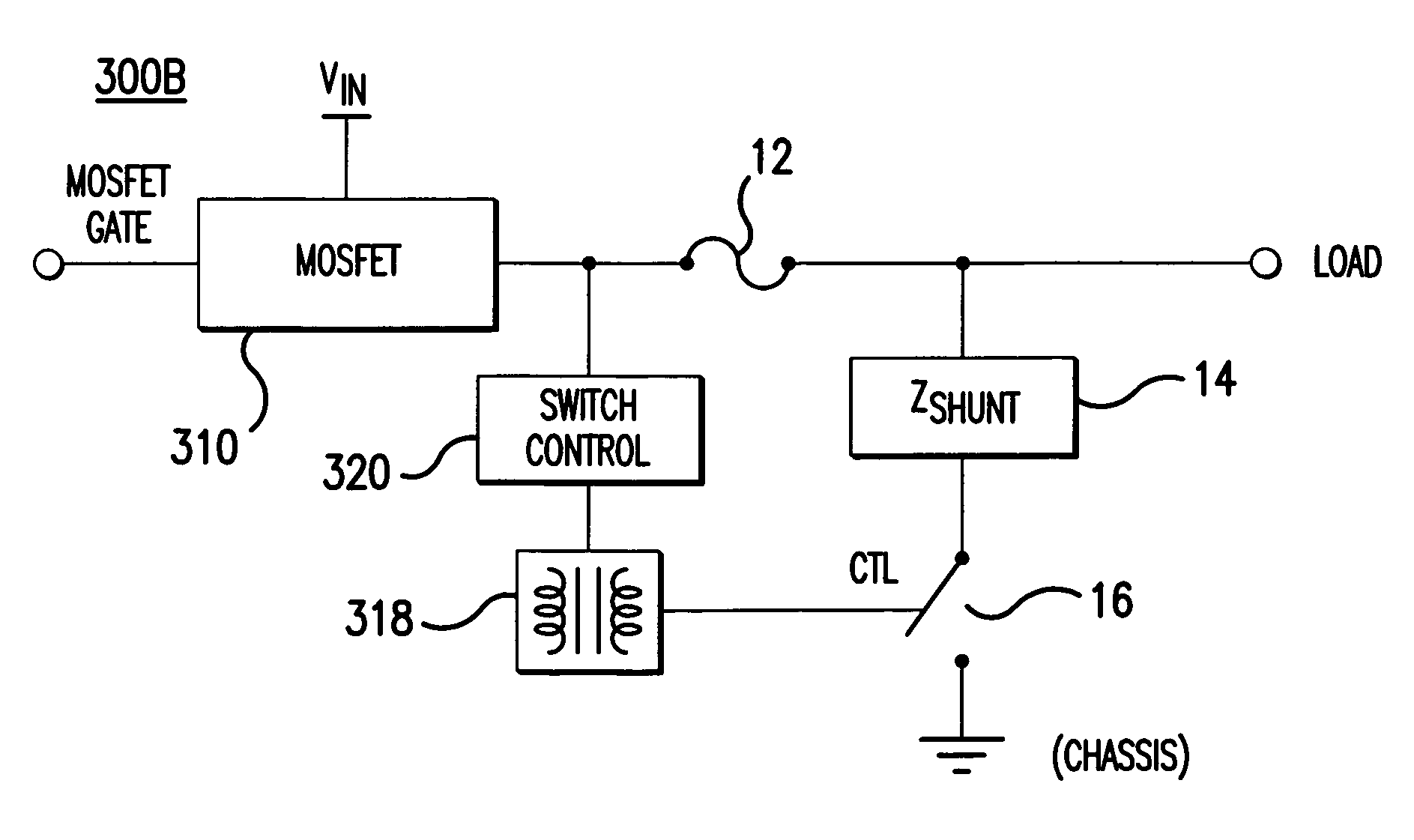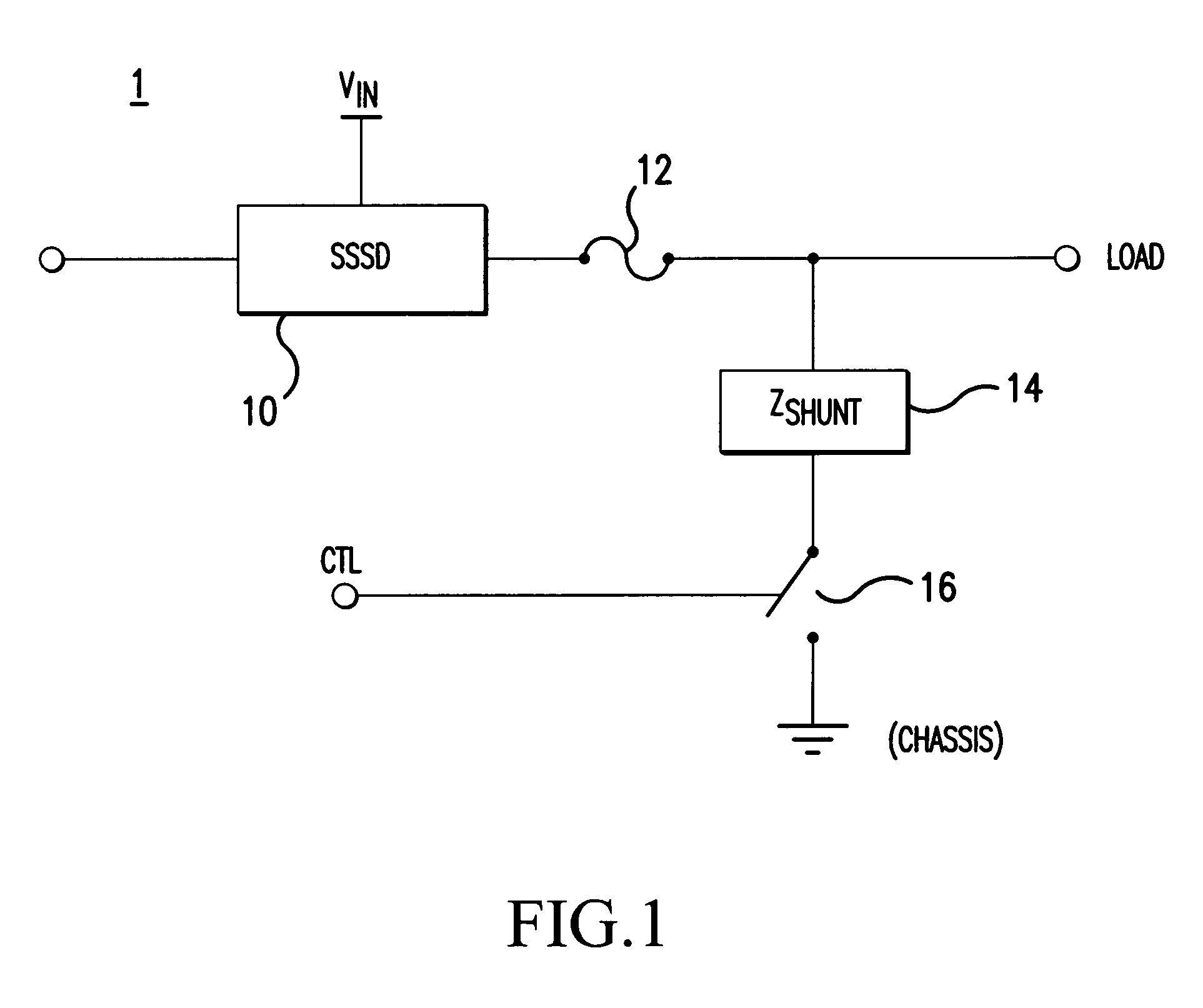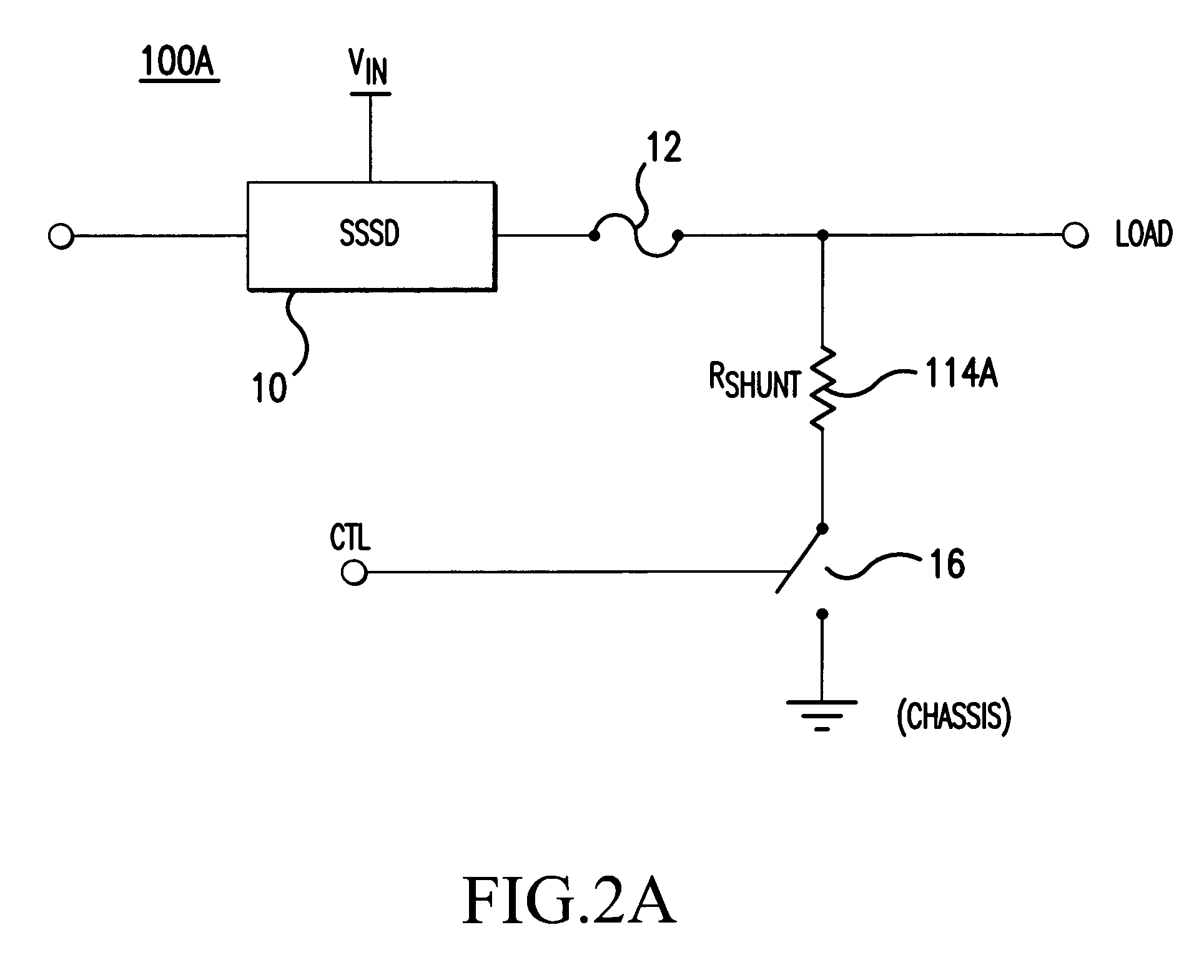Leakage current shunt in an electrical power distribution system utilizing solid state relays
a technology of solid-state relays and leakage currents, applied in the direction of switch power arrangements, contact mechanisms, electric devices, etc., can solve the problems of operator safety and safety risks, and achieve the effect of preventing leakage current and entanglement of operator safety
- Summary
- Abstract
- Description
- Claims
- Application Information
AI Technical Summary
Benefits of technology
Problems solved by technology
Method used
Image
Examples
Embodiment Construction
[0018]In one aspect, embodiments of the present invention relate to an apparatus and a method for shunting leakage current in an electrical power distribution system that uses solid state switching devices as relays and / or circuit breakers. With this leakage current shunting scheme, embodiments of the present invention addresses safety issues that may arise in such electrical power distribution systems. Although embodiments of the present invention are discussed below in which power MOSFETs are used as solid state switching devices (SSSDs) (also referred to as solid state relays) in an electrical power distribution system, aspects of the present invention are applicable to systems using other types of solid state switching devices. Furthermore, although aspects of the present invention are described in the context of a specific application example, it should be recognized that principles of the present invention are applicable to other implementations and environments.
Safety Conside...
PUM
 Login to View More
Login to View More Abstract
Description
Claims
Application Information
 Login to View More
Login to View More - R&D
- Intellectual Property
- Life Sciences
- Materials
- Tech Scout
- Unparalleled Data Quality
- Higher Quality Content
- 60% Fewer Hallucinations
Browse by: Latest US Patents, China's latest patents, Technical Efficacy Thesaurus, Application Domain, Technology Topic, Popular Technical Reports.
© 2025 PatSnap. All rights reserved.Legal|Privacy policy|Modern Slavery Act Transparency Statement|Sitemap|About US| Contact US: help@patsnap.com



